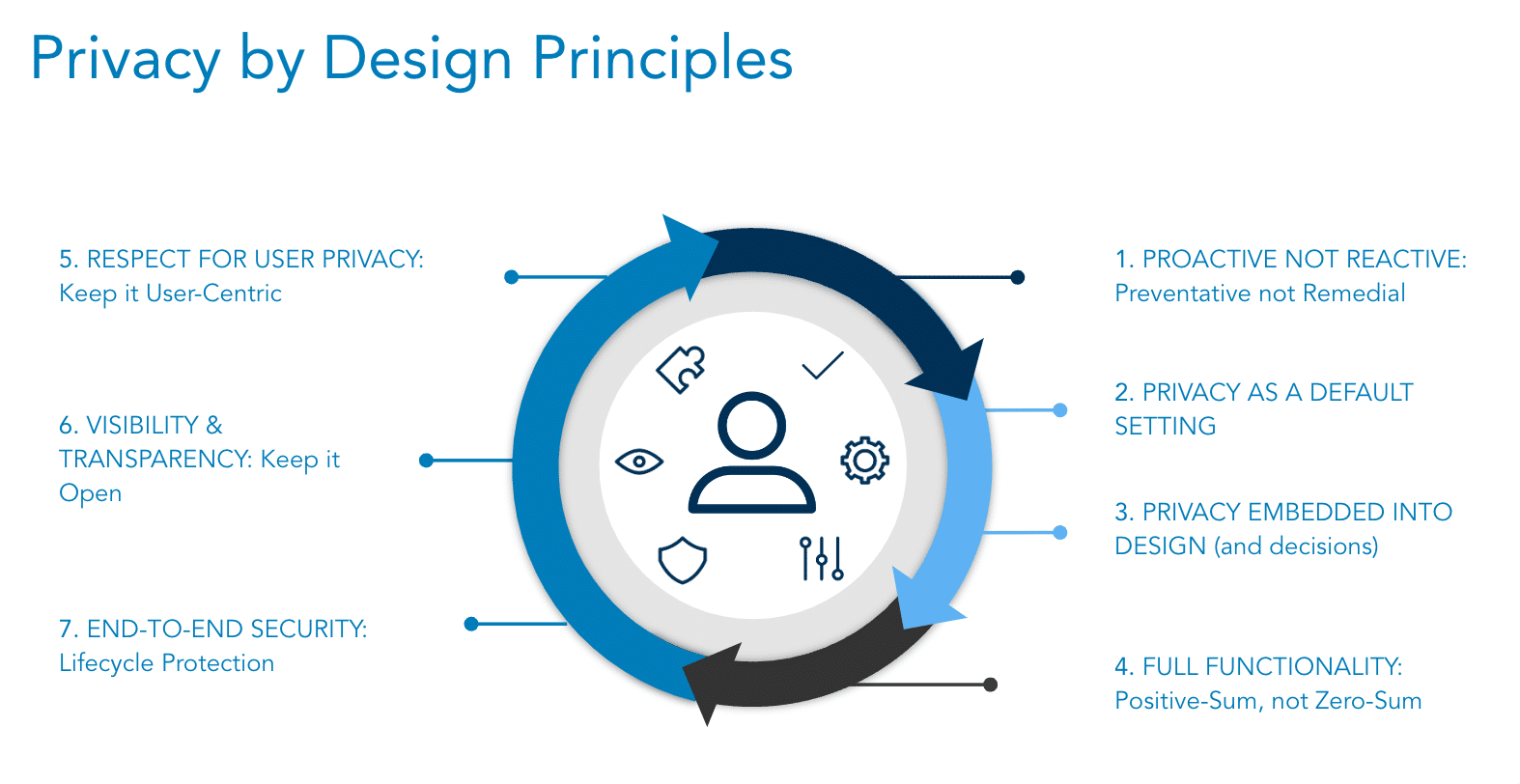In the digital age, privacy is a critical concern for individuals, businesses, and governments alike. Privacy by Design (PbD) offers a proactive approach to privacy protection, emphasizing the integration of privacy considerations throughout the entire design and development process of products, services, and systems. This blog provides an overview of what PbD means, its basic principles, and a checklist for its implementation.
What does Privacy by Design mean?
Privacy by Design is a framework that seeks to embed privacy considerations into the design and development of products, services, and systems. PbD aims to ensure privacy is taken into account at every stage of the development process. From initial design to final deployment and beyond, PbD involves a proactive approach to privacy protection, rather than a reactive one, and intends to prevent privacy breaches from occurring instead of addressing them after the fact.
History of Privacy by Design Explained
Dr. Ann Cavoukian, the former Information and Privacy Commissioner of Ontario, Canada, first introduced the concept of Privacy by Design in the late 1990s. Dr. Cavoukian argued privacy should be built into product, service, and system designs from the outset, rather than added afterward. Privacy regulators and advocates around the world now embrace PbD as a best practice for privacy protection.
The 7 Principles of Privacy by Design
Privacy by Design has seven basic principles that guide the design and development of products, services, and systems:
- Proactive not Reactive; Preventative not Remedial
- Privacy as the Default Setting
- Privacy Embedded into Design
- Full Functionality – Positive-Sum, not Zero-Sum
- End-to-End Security – Full Lifecycle Protection
- Visibility and Transparency – Keep it Open
- Respect for User Privacy – Keep it User-Centric
These principles promote privacy protection throughout the entire development process, from the initial design to the final deployment and beyond.
Privacy By Design Checklist
Organizations implementing Privacy by Design can follow a checklist of best practices. Here are five key points to consider:
- Appoint a Privacy Officer or team
- Conduct Data Protection/Privacy Impact Assessments
- Implement Privacy by Design in all phases of product development
- Ensure data minimization and retention policies are actually applied
- Conduct regular audits to ensure compliance
By following these best practices, organizations can integrate privacy into their products, services, and systems and ensure proactive, intentional privacy protection throughout the entire lifecycle of their products.
PbD is the proactive approach to privacy protection all organizations should take in the digital age. Organizations that integrate privacy considerations into the design and development of their products, services, and systems from the start can build their customers’ trust and reduce their business risk. By following PbD’s Seven Foundational Principles and implementing best practices like conducting privacy impact assessments and appointing a privacy officer or team, organizations can build trust with their customers and ensure they’re meeting their obligations under privacy laws and regulations.


